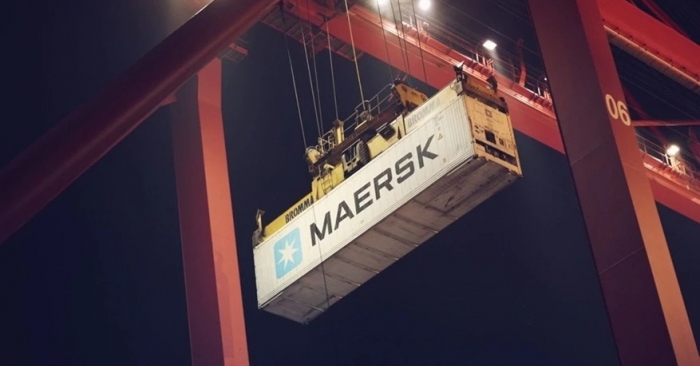Maersk reports 25% profit growth & 6.5% revenue drop for Apr-Jun quarter
August 19, 2020: In the April-June quarter (Q2) of 2020, A.P. Moller – Maersk’s revenue decreased by 6.5 percent to $9 billion, driven by a volume decrease of 16 percent in the ocean and 14 percent in gateway terminals.

August 19, 2020: In the April-June quarter (Q2) of 2020, A.P. Moller – Maersk’s revenue decreased by 6.5 percent to $9 billion, driven by a volume decrease of 16 percent in the ocean and 14 percent in gateway terminals.
“Earnings before interest, tax, depreciation and amortisation (EBITDA) improved to $1.7 billion, which is higher than the initial expectations in the trading update from June of an EBITDA slightly above $1.5 billion. The EBITDA margin increased from 14.1 percent in Q2 last year to 18.9 percent. The continued focus on improving returns showed further results with a cash return on invested capital (CROIC), last twelve months improving to 12.5 percent from 8.9 percent and ROIC, last twelve months increasing to 4.7 percent from 1.4 percent in the previous year. The net interest-bearing debt was $11.6 billion compared to $11.7 billion by the end of 2019, as free cash flow of $1.5 billion allowed for share buy-back, dividends and acquisitions in the first six months of 2020,” said the release.
Søren Skou, CEO of A.P. Moller – Maersk, said, “I am pleased that we despite the headwinds, continued our track record of improving earnings and free cash flow. Our operating earnings improved by 25 percent, marking the eighth consecutive quarter with year-on-year improvements, driven by strong cost performance across all our businesses, lower fuel prices and higher freight rates in the ocean and increased profitability in logistics & services. With a strong result and a strong balance sheet we are well-positioned to financially and strategically come out stronger of the crisis.”
Higher freight rates along with lower fuel prices & costs
In Ocean, the lower volumes were partly offset by the agile capacity deployment of the global network leading to lower costs, together with lower fuel prices and higher freight rates. In logistics and services, profitability increased through cost measures, favourable airfreight contribution and the integration of Performance Team, while Terminals & Towage showed their resilience by compensating lower volumes through cost measures.
The focus on a strong cost and capital allocation discipline will continue, and more additional cost and structural measures across the business will be taken to offset the negative impact of COVID-19 and fund the next stages of the transformation.
Guidance for 2020
A.P. Moller - Maersk suspended the full-year guidance for 2020 (EBITDA before restructuring and integration costs of around USD 5.5bn) on 20 March 2020 due to the Covid-19 pandemic.
A.P. Moller - Maersk reinstates its full-year guidance for 2020 and now expects EBITDA to be between $6-7 billion, before restructuring and integration costs.
The global demand growth for containers is still expected to contract in 2020 due to COVID-19 and for Q3 2020 volumes are expected to progressively recover with a current expectation of a mid-single-digit contraction. Organic volume growth in Ocean is expected to be in line with or slightly lower than the average market growth.
The accumulated guidance on gross capital expenditures excl. acquisitions (CAPEX) for 2020-2021 is still expected to be $3-4 billion, with steps being taken to reduce CAPEX in 2020. High cash conversion (cash flow from operations compared to EBITDA) is still expected for both years.
Q2 2020 marks the eighth consecutive quarter with year-on-year improvements in operating earnings for A.P. Moller - Maersk. #MaerskResults #Maersk pic.twitter.com/W41bMmk7M7
— Maersk (@Maersk) August 19, 2020




